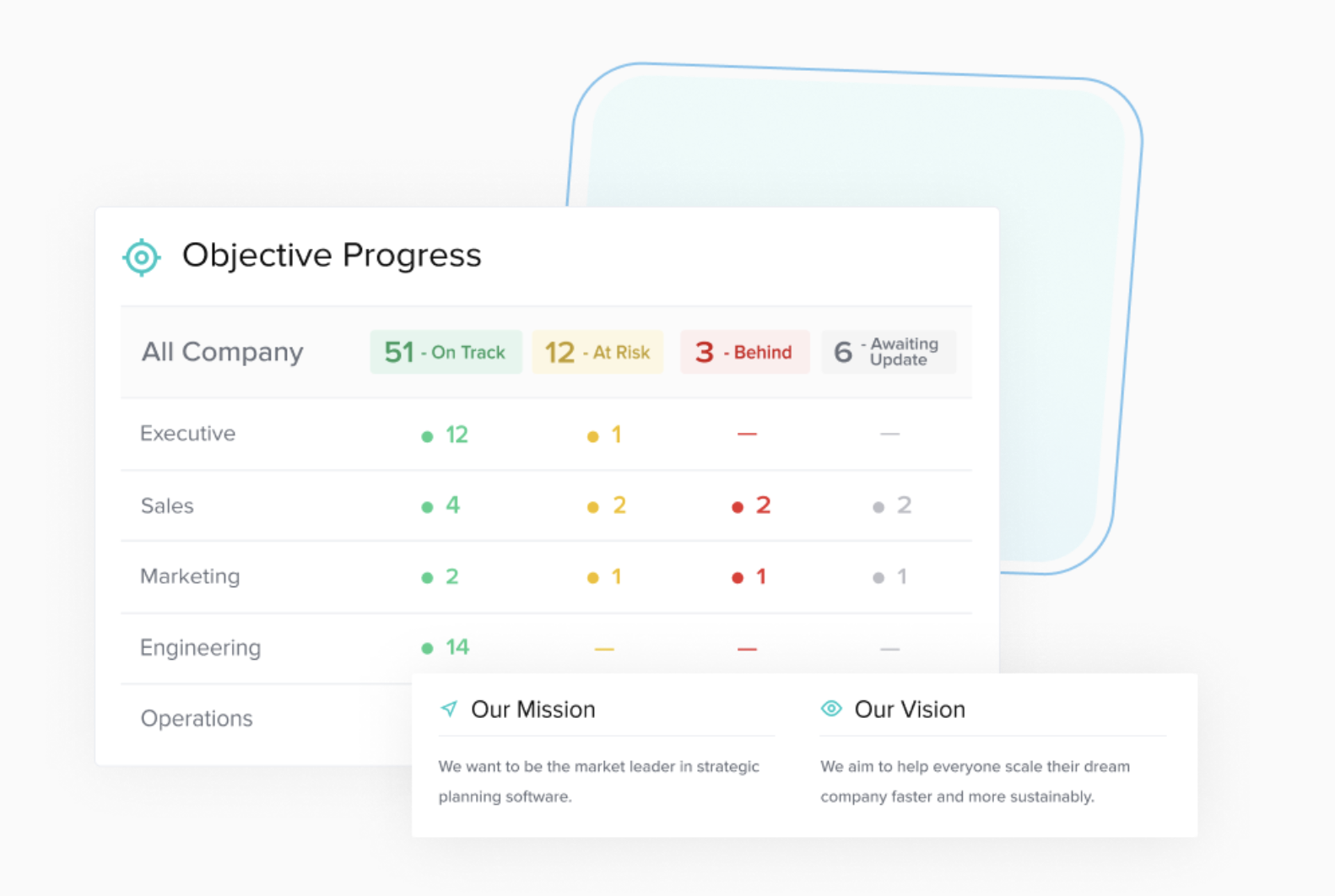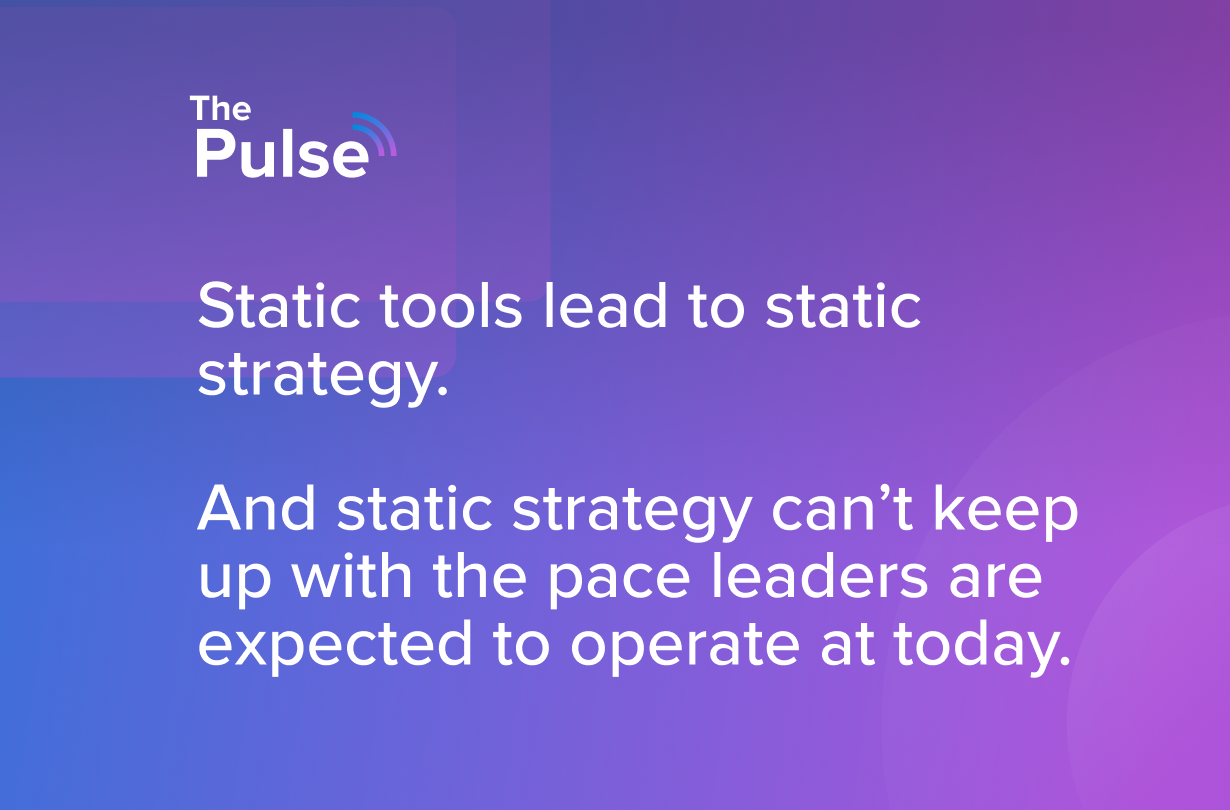
For any growth stage company, opportunities for growth are never lacking and fires are always burning. That is the beauty of life at a startup. Time, more than any other resource, is what you are trying to get more of. That's why for many companies we work with, the decision to implement an operating framework usually gets kicked down the road until the pain becomes too much to bear.
And I get it. I’ve been there too. With so many other challenges and opportunities sometimes it’s hard to justify the idea of slowing down to go faster. Yet, time and time again we see companies make the same mistake. They wait until it breaks before they are willing to implement a solution to help their company operate more efficiently.
What makes it even crazier is that in comparison to the threshold to implement a marketing tool to help with lead conversions or a product management tool to help with engineering efficiency, we often aren't even in the same universe of pain thresholds.
Sometimes we see that companies need validation for why they should implement an operating framework. And from working with other high growth companies, we are able to share countless benefits of setting objectives in a business. However, if you are looking for a short-list of value adds for incorporating an operating framework, here are three immediate benefits:
1. Hours of time savings and efficiency for leadership
2. Alignment across every employee and team throughout the business
3. ROI in managing strategic objectives dynamically and measuring impact
In working with some of the leading growth stage companies and strategy leaders, we've had the opportunity to see firsthand the importance of goal setting in business, and more importantly, the importance of clear objectives.
Today, we walk through how setting an operating framework for growth can save your company time, align your employees, and provide an immediate ROI from day one.

Time Savings and Efficiency
We've all been there. We walk into a recurring weekly leadership meeting wondering how quickly we can wrap it up. There isn't consistency to the meeting, and we end up discussing the pain that seems most pressing that week. Rarely is it focused on the business objectives examples we spent hours discussing in our annual offsite session. And the importance of setting goals we once agreed upon is a distant memory.
As a leadership team we spend time every week pulling together updates on our objectives, updating a static google sheet or dashboard, and thinking through topics to discuss. Yet the moment the meeting comes around, we are jumping around from platform to platform with no alignment of expectations for the meeting and takeaways afterwards.
Think about how much time you spend every week assembling these updates on objectives, tracking down metrics, and sitting in meetings that don't result in the type of productivity you're seeking in leadership meetings.
This is one of the biggest values we measure with Elate. On average, we find that Strategy and Ops leaders that leverage a solution for powering their framework save on average three hours per week. For other leaders, they save approximately one hour per week. If you have a leadership team of five team members, strategy and ops included, then you are saving collectively seven hours per week by streamlining your objective updates, automating how you track KPIs, and creating a cadence for your meetings.
If time is the most precious commodity for your business, then you'd be hard-pressed to find an easier way to immediately save time across some of the highest earning positions at your company.
Company Alignment
You might argue it's hard to put a price on company alignment. We can dive into countless studies and Harvard Business Review articles trying to put a value on the importance of aligning teams around goals that are measurable and visible. However, for this example we'll lean on the practical application of answering the question, 'Why do businesses set objectives?'
For starters, setting objectives drives the focus you have as a business. Whether you are trying to become a market leader, create an incredible culture for your employees, or deliver value to customers, the objectives you set as a business lead to the success you are ultimately trying to achieve.
So in setting objectives, it only makes sense that you would want everyone driving towards those company goals. From the way employees prioritize their time to how they measure their own success and impact at a company, the importance of setting goals and objectives can't be understated.
Far too often companies set their sights on a vision, only to realize employees are focused on priorities that don’t align with that long term vision. Often this confusion is caused by a lack of visibility and communication.
Creating a single source of alignment, especially in today's hybrid world of in office and remote employees is critical to sustained success.

Building Dynamic Objectives
When thinking about measuring objectives or implementing a framework for setting company goals, often high growth companies can fall victim to the idea that growth and change is a blocker for adding structure. Some common pushback we’ve heard sounds something like, 'We are just growing too fast and things are changing so quickly. If we set goals, then they will just be outdated the next month.
Well, do we have great news for you. Your objectives don’t have to be static!
Just because you reach or even exceed an objective, doesn't mean you can't keep going. In fact, overachieving on a goal that you set as a company likely means you have an opportunity to double down or invest more resources. It's important that you are constantly evolving objectives and goals to continue driving your business forward.
Or let's say one of your objectives changes, because your team makes a product pivot. Perfect. Instead of just scrapping the original objective entirely, it might be better served to pause or hold the objective until a better time or even save the context as to why you pivoted in the first place.
Strategic planning for companies today isn't an annual or even a quarterly process that is designed to set it and forget. It is an ever-evolving structure designed to help you maximize your company's growth and accelerate your attainment of goals.
The importance of strategic objectives isn't simply about building them to check off a to-do on your list. It's so that you have a retrospective view into performance and a forward-looking lens into how you can continue sifting through all of the good ideas to find the best idea for your company.
Once you set those objectives in motion, measure your performance against projected outcomes to really maximize your team's performance.

Meet Elate
So now the ball’s in your court. If you're looking for a reason to finally take the plunge into implementing an operating framework, here are three reasons to justify the decision.
And trust us, it isn’t as painful as you might think. From working with high growth companies just like yours, we know the importance of intuitiveness and quick wins across teams. Our strategic process for working with leadership teams to build a regular cadence and rhythm helps take the heavy lifting off of you, and creates a blueprint for rolling it out successfully to your entire company.
If you're interested in learning more about how Elate is working with other high growth companies, reach out to our team today. We'd love to share more.


